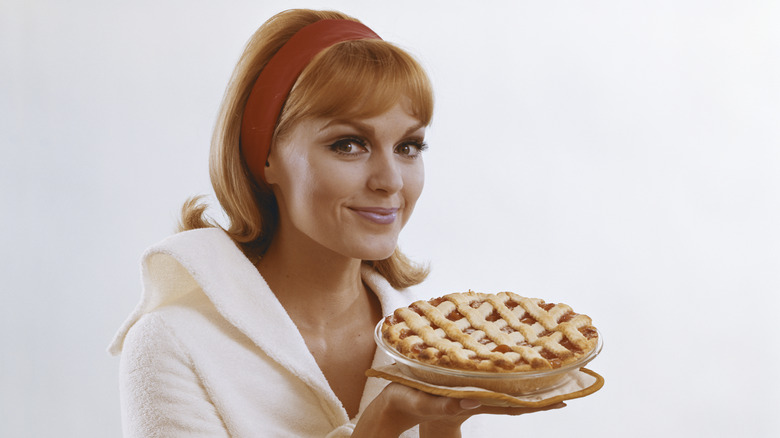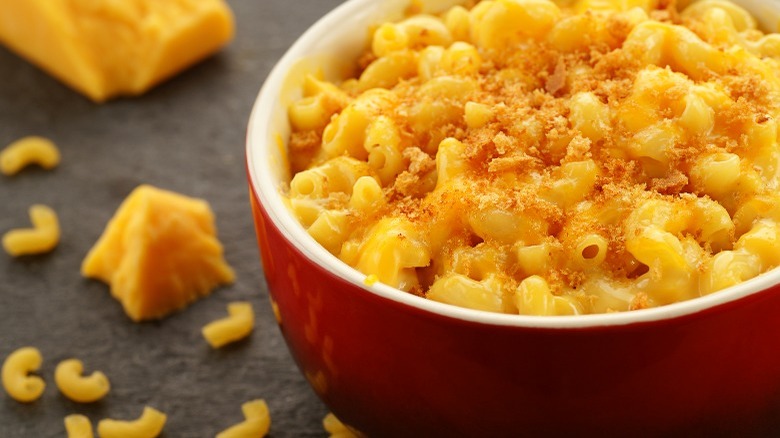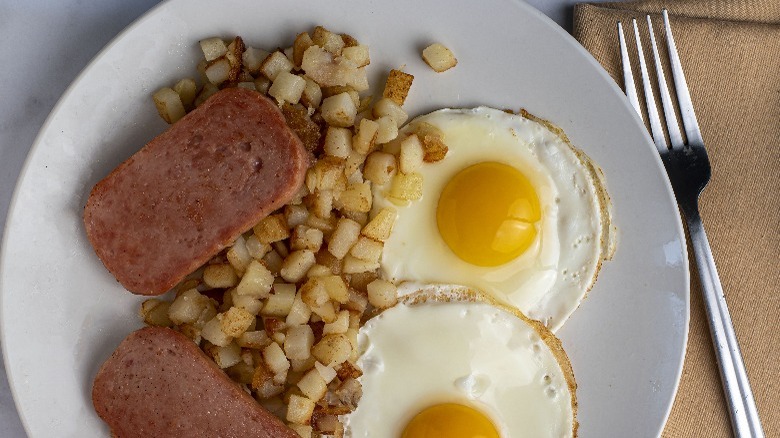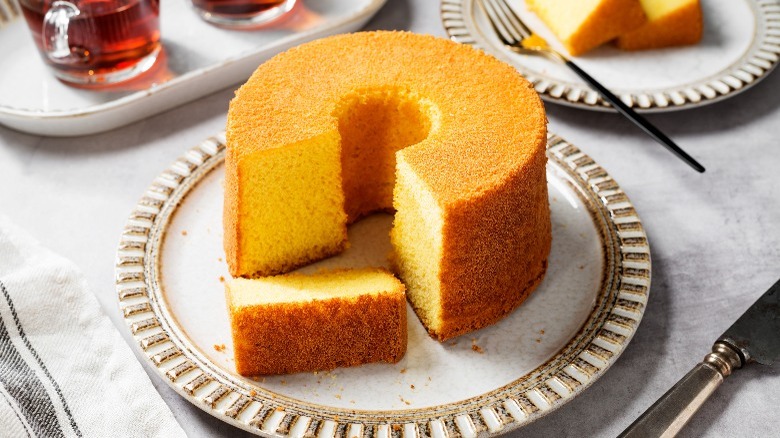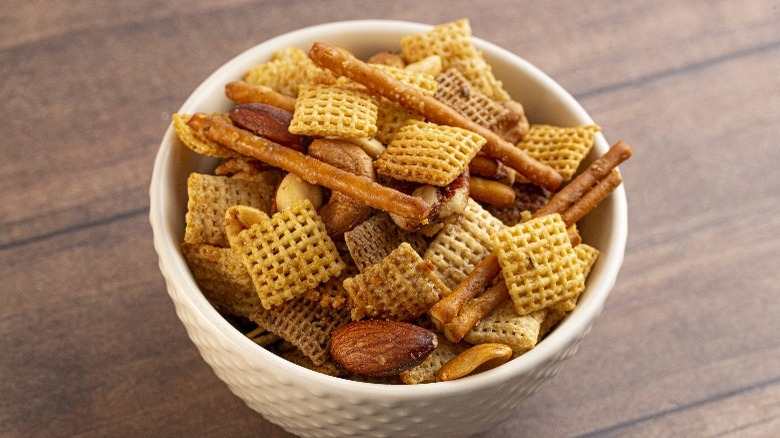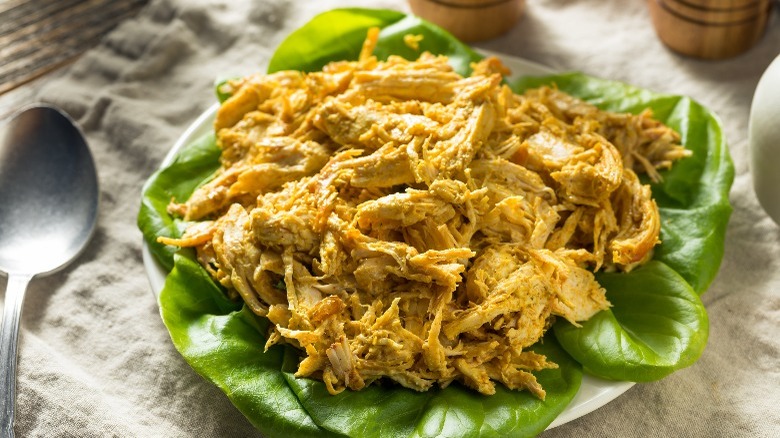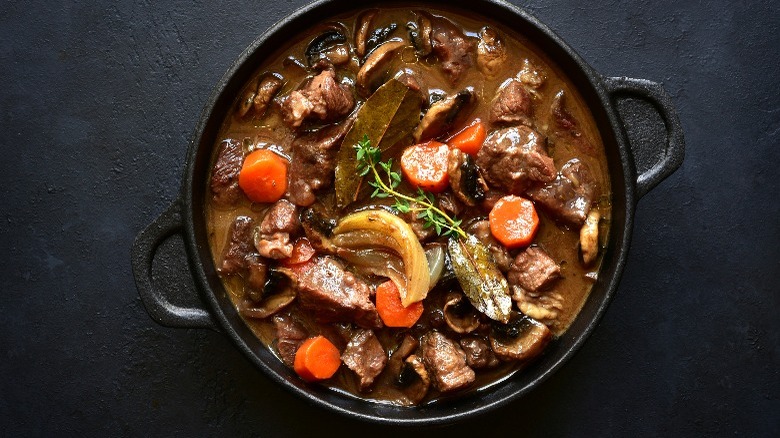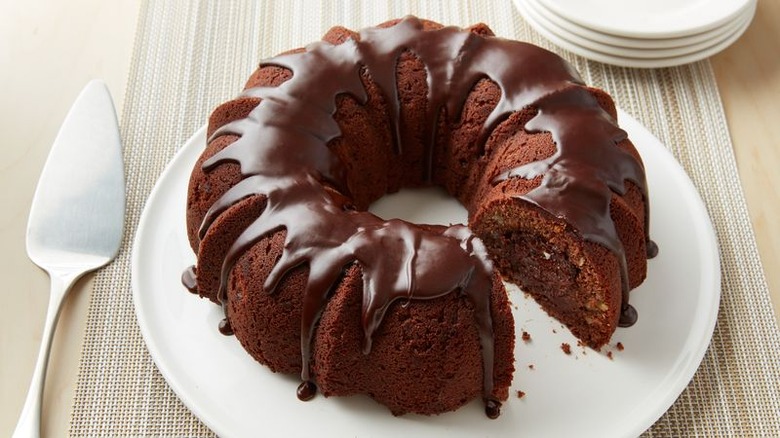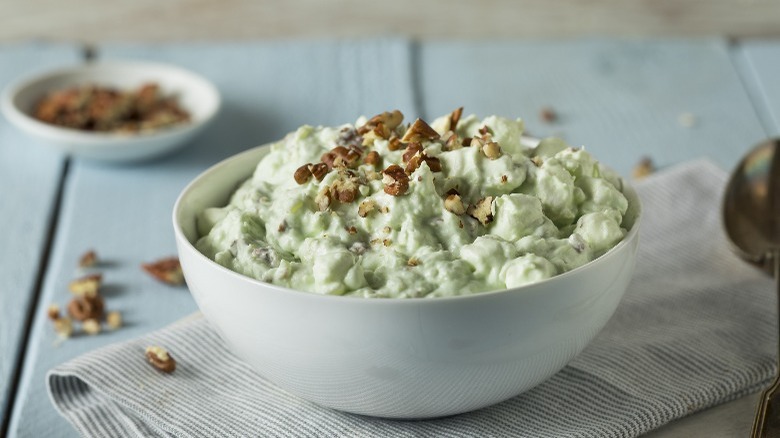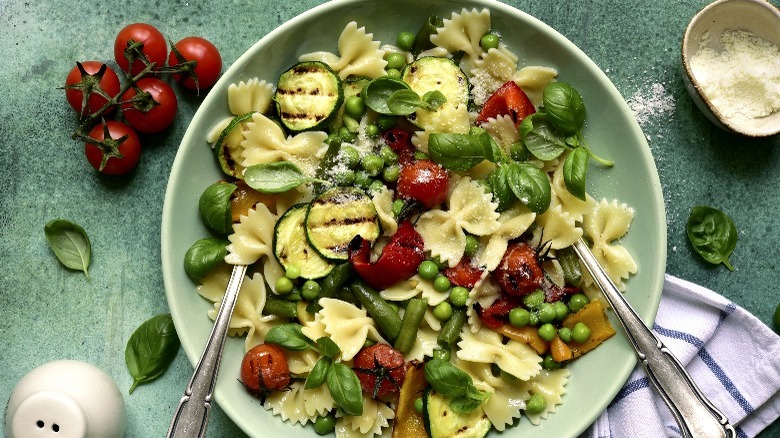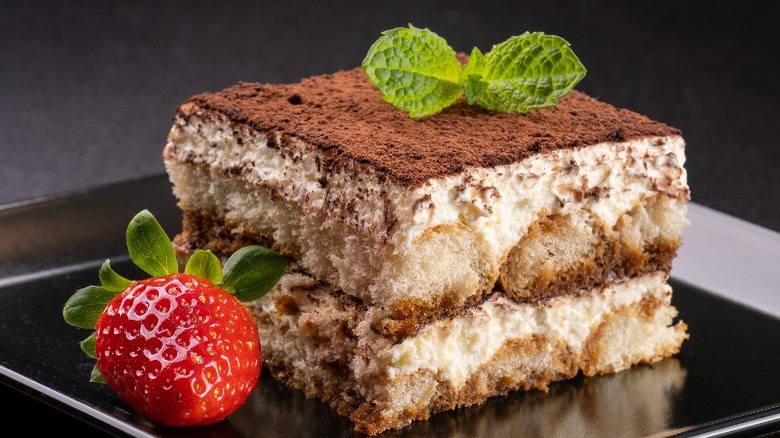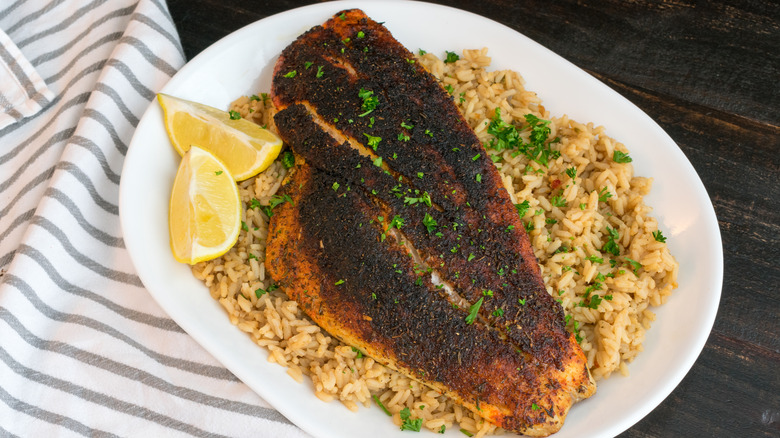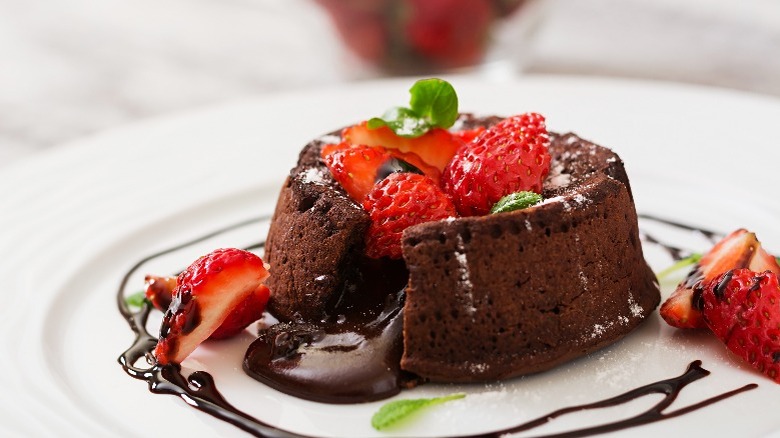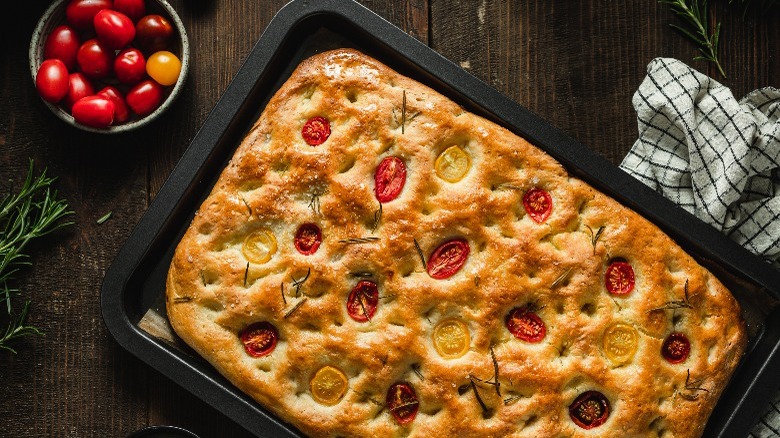This Was The Most Popular Recipe The Year You Were Born
Long before recipes could go viral on social media or we could stream cooking shows, we've been sharing recipes and experimenting with new ingredients. Food has an incredible way of taking us on a delicious trip down memory lane, from simple nostalgic comfort foods to mouthwatering dinner-dining extravaganzas.
Every decade has its food trends that bring back memories — '50s babies might remember an era of Jell-O molds and TV dinners, while '80s kids might get nostalgic over beef stroganoff or sloppy joes. So, get ready to embark on a flavorful journey through time!
In this article, we'll dig into the most popular recipes from different years and discuss the fascinating stories behind their rise to stardom and why they became instant favorites. Let's dive in and discover the dishes that won over the hearts (and stomachs) of generations past! Which recipe was the most popular when you were born?
1937 - Macaroni & Cheese
Here's a dish with a long history — recipes for a simple plate of pasta (usually small tubed noodles like macaroni) covered in cheese have been around since at least the 18th century. But in the 1930s, this economical meal became a lifesaver for homes across the country during a sharp economic downturn.
During the height of the Great Depression, families were looking to create meals that were cheap and filling, and often, these recipes didn't contain meat or fresh vegetables due to the cost. When Kraft introduced its iconic Macaroni & Cheese dinner for $0.19 a box, the creamy pasta dish quickly gained popularity as a convenient and affordable meal.
Even if Americans weren't eating the store-bought stuff, macaroni noodles with cheese sauce quickly became a much-loved staple, with homes developing their own recipes for decades afterward. Common adaptations of this beloved dish include adding bread crumbs for crispiness, buffalo sauce or peppers for spice, or vegetables like broccoli or spinach for a slightly healthier take on the classic.
1943 - Spam 'n Eggs
It's just what it says on the tin: fried spam... and eggs. The famous tinned loaf of meat was invented in 1937, just before the beginning of World War II, and quickly emerged as a versatile and long-lasting meat product that became widely popular, particularly among soldiers and working mothers. When Spam released its official recipe for Spam 'n Eggs in 1943, it became a breakfast favorite almost overnight.
Spam was a convenient, cheap, and portable food product that soldiers could carry with them, but it was just as convenient on the home front as well. As more women were entering the workforce than ever before, Spam 'n Eggs provided a quick and easy breakfast option for their families, offering a meal that required minimal preparation.
You don't have to be a master chef to cook this dish for yourself — simply fry a couple of slices of spam in a pan with a few eggs. It is also a highly customizable dish and can be served with other foods, like potatoes, tomatoes, spinach, and rice.
1948 - Chiffon Cake
In 1927, Los Angeles insurance agent-turned-caterer Henry Baker had the goal of developing a fluffy and delicate cake recipe that was even lighter than his signature angel food cake, but more flavorful than a traditional sponge. He was able to accomplish this by using beaten egg whites that had been separated from the yolks, and vegetable oil rather than butter or shortening.
Baker began selling his cakes to a select few customers throughout the '30s and '40s, and his cakes eventually became a favorite among the Hollywood well-to-do. He sold them to movie stars and celebrities for their private parties and even partnered with the famous Brown Derby restaurant.
For 20 years, he kept his cake recipe a closely guarded secret. But in 1948, Baker finally sold the recipe to General Mills, with the goal of making it accessible to home cooks across the country. General Mills quickly published the recipe in "The Betty Crocker Recipe Card Library," and almost immediately, the cake became an instant hit due to its versatility and feather-light texture. It pairs well with whipped cream or topped with fruits, light glazes, or caramel.
1952 - Chex Mix
Chex Mix is savory, crunchy, and downright addictive — and it's been a hit at parties and gatherings for decades. The original recipe appeared in an issue of Life Magazine in 1952 — only a couple of years after Chex cereal hit the market — and immediately became an American snack staple. Aside from being easy to prepare, the recipe was also inexpensive to make and serve to a large number of guests.
Over the years, families have developed their own recipes, but the traditional Chex mix normally contains wheat and rice Chex, nuts, small pretzels, and a seasoning blend of butter, Worcestershire sauce, and garlic salt. Originally, the recipe was baked in the oven to create an even crispier texture.
Today, Chex makes and sells its own blends in a variety of flavors, like Cheddar, Honey BBQ, and Buffalo Ranch. But you can still make your own with the original recipe, or by adding your own favorite spices and add-ons.
1953 - Coronation Chicken
Coronation Chicken is a popular dish that was created for a luncheon held during Queen Elizabeth II's coronation in 1953. Also known as "Poulet Reine Elizabeth," this savory dish was developed at Le Cordon Bleu London culinary school by heads Rosemary Hume and Constance Spry, with help from culinary students enrolled at the school.
Coronation Chicken was a simple but flavorful dish born out of necessity. Le Cordon Bleu was tasked with feeding 350 people from a small kitchen located in the Great Hall of Westminster School. Because the kitchen was so small and wouldn't be able to furnish a more complex dish, Hume and Spry knew that they needed to create a dish that would impress in its flavors and presentation, without requiring lots of space or cooking implements.
The recipe is made of boned chicken in a creamy curry sauce on a bed of rice, peas, and pimentos. While the recipe may not seem all that extravagant today, many of the ingredients used were difficult to come by and quite novel in the early '50s. The United Kingdom was only just coming out of the rationing of World War II, and many of the spices used in the curry sauce would have been new and exciting at the time. In fact, chicken wasn't even widely available to the British public at the time, yet this recipe was instantly popular.
1963 - Beef Bourguignon
There are many takes on this classic dish, from simple to complex, but the main parts of Beef Bourguignon remain the same: a thick beef and vegetable stew with red wine in a brown sauce, served with mashed potatoes. A simple peasant dish resembling Beef Bourguignon has existed in Europe as far back as the middle ages, but the dish as we know it today was first served in upscale French restaurants in the late 19th century. While it soon became a popular part of French cuisine, it remained relatively unknown to American diners.
That is, until 1961 when Julia Child's wildly popular TV show "The French Chef" brought Beef Bourguignon into the spotlight. The recipe was introduced to American home chefs on a wide scale a few years earlier when it was published in the hit cookbook "Mastering the Art of French Cooking," written by Child, Simone Beck, and Louisette Bertholle. When Child herself prepared her Beef Bourguignon on television, it was well received as an elegant and sophisticated option for dinner parties and special occasions.
1966 - Tunnel of Fudge Cake
Back before food channels and recipe blogs were the default, home bakers got their inspiration from magazines, cookbooks, and baking competitions, both at the local and national levels. Since 1949, Pillsbury has been hosting its famous Bake-Off competition, allowing aspiring home bakers to show off their skills and culinary creativity. The winners and runner-ups of these competitions would receive national exposure, but few would become as popular as the well-loved Tunnel of Fudge Cake.
Submitted by Ella Helfrich, the recipe was a runner-up in the 1966 Bake-Off. Featuring a rich, spongey chocolate cake with a gooey, fudgy center and drizzled with a chocolate glaze on top, it captivated dessert lovers and became a must-have treat for chocolate enthusiasts throughout the '60s.
But this recipe wasn't just popular because of its flavors — it was also famous for its distinctive shape. The Tunnel of Fudge cake is cooked in a bundt pan, which was new at the time, having only been invented in 1950. Home bakers loved this recipe so much that it sparked a spike in bundt pan sales!
1976 - Watergate Salad
There are certain dishes that are products of their time, and the Watergate Salad is certainly one of them. This delightful pastel green dessert looks more like a Shamrock Shake than anything resembling a salad, and it doesn't have much to do with the famous political scandal, either. But the recipe took off in the mid-'70s, just a few years after the resignation of President Richard M. Nixon.
While it's unclear why the dessert was named after the famous Watergate scandal that dominated headlines from 1972 to 1974, it is likely named after the similarly green-colored Watergate Cake with that had recently become popular.
Made with Jell-o's newly-released instant pistachio pudding mix, pineapples, whipped cream, and a whole lot of nuts, this fluffy dessert is made in a similar way to ambrosia salad, which was a popular dessert in the '50s and '60s. It was often topped with walnuts or maraschino cherries.
1978 - Pasta Primavera
While Pasta Primavera may seem as quintessentially '70s as shag carpeting, the dish actually has a somewhat complicated history behind the scenes. This vibrant pasta plate was originally prepared with spaghetti coated in a buttery, creamy sauce and tossed with a variety of fresh vegetables, like string beans, tomatoes peas, asparagus, pine nuts, and broccoli.
The dish was the brainchild of Tuscan native Sirio Maccioni, maître d' and proprietor of the New York restaurant Le Cirque. Initially, the dish was created to be an off-menu special item that would be prepared at the table in front of diners. It was off-menu because French head chef Verges refused to cook pasta in his kitchen, believing it was an insult to his native cuisine.
Nevertheless, news of this secret dish spread throughout the fine dining scene, though food critics gave it a mixed reception because it was so inconsistent from day to day. Eventually, the popularity of the vibrant pasta dish couldn't be ignored, and it was put on the official menu. The subsequent positive reviews shot the recipe to fame in 1977, and it quickly became a go-to fine-dining choice and a favorite recipe through the 70s and into the 80s.
1981 - Tiramisu
Tiramisu, while still a favorite dessert today, can't quite escape its reputation as the dessert-du-jour in the '80s. While this delicious layered dessert had been growing in popularity since its invention in the late '60s, it soared to the spotlight in '81 when Lidia Bastianich began serving it in her Manhattan restaurant, Felidia.
Tiramisu features espresso-soaked ladyfingers, creamy mascarpone cheese, and a dusting of cocoa, which create a delicate balance of flavors and textures. It's sometimes served with mint, strawberries, or raspberries to balance out the sweet chocolate flavor.
Diners loved the light and fluffy texture of the whipped mascarpone filling (mousses and fluffs were a big trend at the time), and the delicate presentation of the layered ladyfinger cookies. Soon afterward, other restaurants began serving tiramisu as well, and it didn't take long before recipes began popping up in cookbooks for chocolate lovers to make at home.
But why was it such a hit with restaurateurs and home chefs alike? Namely, because of how easy it is to make. While it's beautiful, it's not a dish that takes a master chef to create.
1985 - Blackened Redfish
Perhaps his best-known and celebrated dish, Blackened Redfish was created in 1985 by renowned chef Paul Prudhomme during his time at Commander's Palace in New Orleans, Louisiana. Chef Prudhomme is credited with starting the trend of blackening fish, although he did not officially invent the technique.
The process involves dipping the fish in butter before being coated with a blend of herbs and spices. The fish is then placed in a very hot cast iron skillet to char the butter and spices to a dark brownish-black color and a rich, slightly spicy flavor. Blackened redfish is often served on a bed of rice.
After making his mark on the New Orleans food scene, this wildly popular staple of New Orleans cuisine helped launch a massive trend in the '80s. Soon, restaurants everywhere were blackening all kinds of seafood, eventually leading New York magazine to coin the term "blackened everything" in 1991.
1991 - Molten Chocolate Lava Cake
Sure, chocolate cake with various fillings has been around much longer than the 19th century, but molten chocolate lava cake, an iconic dish made popular by chef Jean-Georges Vongerichten, took the Manhattan food scene by storm in 1991. It didn't take long for it to become the must-have dessert of the '90s.
Chef Vongerichten claims that he invented the dish in 1987 when he accidentally pulled a chocolate sponge cake from the oven before it was ready. While the cake was still gooey and soft in the center, the texture and taste were pleasant. He began refining this happy accident into a recipe he could easily replicate, and by the early '90s, it was a favorite menu item at his Manhattan bistro, JoJo.
This indulgent treat — with its warm, oozing chocolate center — is often served with a dusting of powdered sugar or a scoop of vanilla ice cream. It's certainly a show-stopper and the perfect dessert to present on special occasions. While molten lava cake was originally a fine-dining specialty, it only took a few years for its popularity to spread, and by the late '90s, it was officially mainstream, being served at Disney theme parks and Chili's alike.
1994 - Focaccia Bread
It's no doubt that Mediterranean food was all the rage in the late '90s, and focaccia bread, an Italian flatbread with a pillowy texture and flavorful toppings, was no exception. Americans were clamoring for flavorful and healthy food as a contrast to the fast food and ultra-processed fare that was beginning to dominate the country's diet. Homemade artisanal bread like focaccia was the perfect answer to traditional grocery store white bread.
This ancient Northern Italian bread recipe had been making the rounds in Italian-American restaurants during the late '80s and early '90s, but was still relatively unheard of, until 1994, when Carol Field published her hit cookbook, "Focaccia: Simple Breads From The Italian Oven." Known for its versatility and ability to adapt to various ingredients like rosemary, garlic, cheese, asparagus, basil, and sun-dried tomatoes, it became a popular choice as an appetizer, side dish, or shareable party snack.
2000 - Cupcakes
Clearly, cupcakes are not a new invention. In fact, they've been a favorite dessert since 1796, when Amelia Simmons developed "a light cake to bake in small cups" for her cookbook "American Cookery," (via Food 52). Small cakes decorated with colorful icing have been a favorite for decades, but in 2000, these decadent delights exploded in popularity.
Soon, pop-up cupcake bakeries were showing up all over cities and the cookbook market was flooded with tomes to teach you how to make the perfect cupcake for yourself. Gourmet cupcakes became a trendy option for weddings and shows like "Cupcake Wars" have become binge-able hits.
It's easy to see why this trend took over: Often adorned with whimsical decorations and an assortment of flavors, cupcakes appeal to both children and adults alike. While the cupcake craze isn't quite as intense as it used to be, they're still a favorite for all kinds of events and special celebrations.
